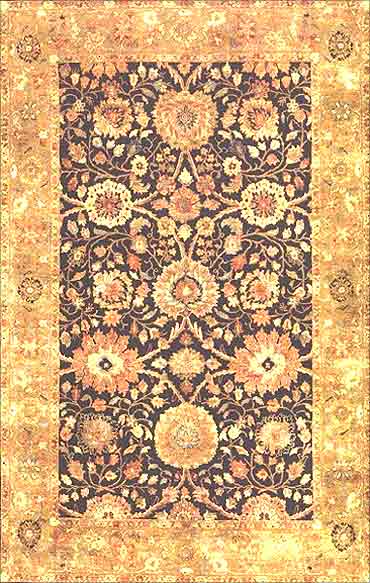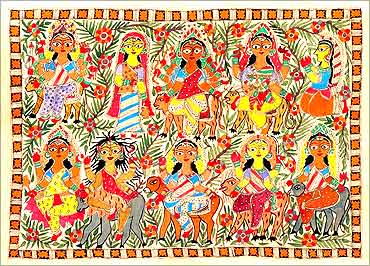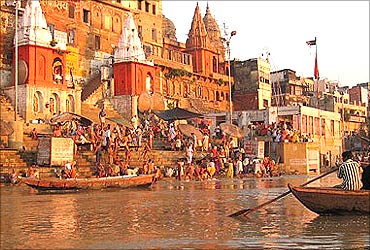 | « Back to article | Print this article |
The dream of a Hardoi weaver
Momin, till a few months ago, used to weave carpets in a village in Hardoi till he and his friends decided to leave for the city. Orders had stopped coming.
So, he is now peddling his stuff in Delhi's suburbs in a rented cycle rickshaw.
While he earned a mere Rs 1,600 a carpet and barely survived, today he earns Rs 12,000 a month.
Yet, he is unable to accept this new identity. He is dreaming of getting his artisan friends to start weaving again at their shack in Khoda village in Ghaziabad where they live. Maybe proximity to the city would help them now.
Momin and his friends don't figure anywhere in the many programmes that are on to impart skills to the rural youth and help them find jobs.
Click NEXT to read moreThe dream of a Hardoi weaver
The Sampoorna Grameen Swarojgar Yojana of the rural development ministry, meant to help people with credit to begin income generating activities, has been a dud in north Indian states.
Revamped as the National Livelihood Mission, one of its components is skill development and placements in partnership with industry. Private players like NIS Sparta, Dr Reddy's and IL&FS are setting up training centres wherever there is demand.
Click NEXT to read more...The dream of a Hardoi weaver
And the jobs are mainly in retail, business process outsourcing units and sectors which require people to leave their towns and villages and migrate.
In two months, NIS Sparta has trained and placed 1,700 people in cities after IGNOU certified its training in communication skills.
The other programme is the Skill Development Initiative of the labour ministry which has been enrolling private players to set up skill-imparting facilities for rural youth. However, none of these programmes is looking at the large number of skilled people in villages who can earn more with some support.
These are artisans and weavers in the country who have not been helped by the Khadi and Village Industry Corporation so far in making their skills count in terms of money.
Click NEXT to read more...
The dream of a Hardoi weaver
Vijay Kumar, the man who headed Velugu in Andhra Pradesh and who is now helping roll it out nationally as the National Livelihood Mission, says the programme right now does not look at traditional skills or linkage to markets.
Its focus is on organising people and equipping them to use loans for their betterment. He cites the example of suicides by powerloom workers in Andhra Pradesh. Then, each group was given a loan of Rs 5 lakh, which helped them pay off the money lenders and make their activities profitable.
However, he says that in the case of Madhubani paintings in Bihar, a model of development by Asian heritage has proved successful and will be backed by the mission.
Click NEXT to read more...
The dream of a Hardoi weaver
If such models are implemented in Benaras or Khurja or Hardoi for weavers and potters, the mission will definitely help find end-to-end solutions, he says, referring to forward and backward linkages to markets, raw materials, and others.
Whatever plans the government may have, weavers are migrating to cities in search of work, often abandoning their traditional skills for good.
Momin and his friends may or may not succeed in making their dream come true in the city, but it is a fact that the lot of weavers who need no skills is unaddressed.
The more traditional skills are neglected, the higher is the chance that they will cease to exist.





